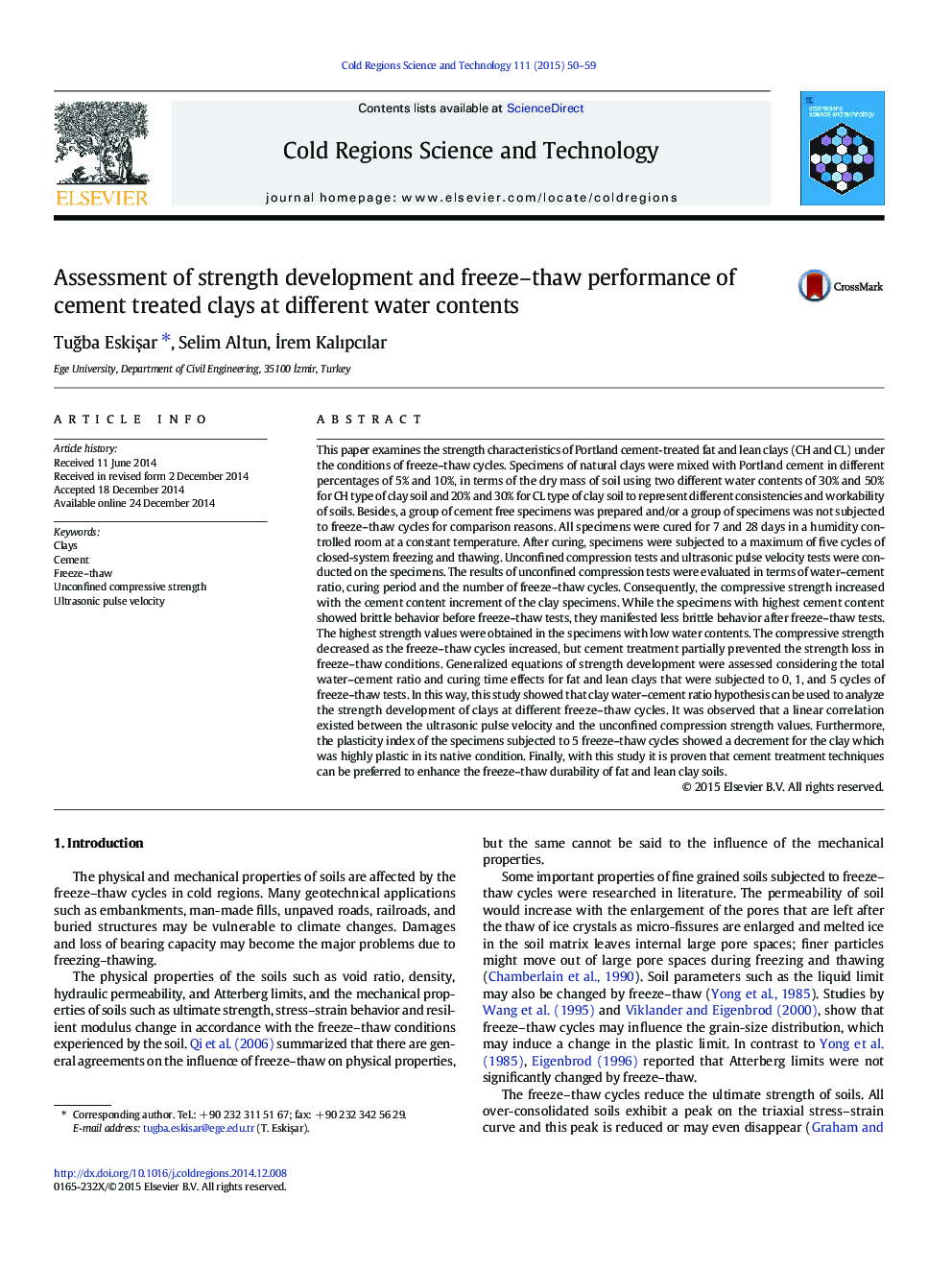| کد مقاله | کد نشریه | سال انتشار | مقاله انگلیسی | نسخه تمام متن |
|---|---|---|---|---|
| 4675722 | 1634453 | 2015 | 10 صفحه PDF | دانلود رایگان |
• Cement treatment reduces the effects of freezing–thawing.
• Untreated soil samples could hardly survive the effects of freeze–thaw cycles.
• Generalized strength relationships are proposed.
• UPV tests are performed.
This paper examines the strength characteristics of Portland cement-treated fat and lean clays (CH and CL) under the conditions of freeze–thaw cycles. Specimens of natural clays were mixed with Portland cement in different percentages of 5% and 10%, in terms of the dry mass of soil using two different water contents of 30% and 50% for CH type of clay soil and 20% and 30% for CL type of clay soil to represent different consistencies and workability of soils. Besides, a group of cement free specimens was prepared and/or a group of specimens was not subjected to freeze–thaw cycles for comparison reasons. All specimens were cured for 7 and 28 days in a humidity controlled room at a constant temperature. After curing, specimens were subjected to a maximum of five cycles of closed-system freezing and thawing. Unconfined compression tests and ultrasonic pulse velocity tests were conducted on the specimens. The results of unconfined compression tests were evaluated in terms of water–cement ratio, curing period and the number of freeze–thaw cycles. Consequently, the compressive strength increased with the cement content increment of the clay specimens. While the specimens with highest cement content showed brittle behavior before freeze–thaw tests, they manifested less brittle behavior after freeze–thaw tests. The highest strength values were obtained in the specimens with low water contents. The compressive strength decreased as the freeze–thaw cycles increased, but cement treatment partially prevented the strength loss in freeze–thaw conditions. Generalized equations of strength development were assessed considering the total water–cement ratio and curing time effects for fat and lean clays that were subjected to 0, 1, and 5 cycles of freeze–thaw tests. In this way, this study showed that clay water–cement ratio hypothesis can be used to analyze the strength development of clays at different freeze–thaw cycles. It was observed that a linear correlation existed between the ultrasonic pulse velocity and the unconfined compression strength values. Furthermore, the plasticity index of the specimens subjected to 5 freeze–thaw cycles showed a decrement for the clay which was highly plastic in its native condition. Finally, with this study it is proven that cement treatment techniques can be preferred to enhance the freeze–thaw durability of fat and lean clay soils.
Journal: Cold Regions Science and Technology - Volume 111, March 2015, Pages 50–59
